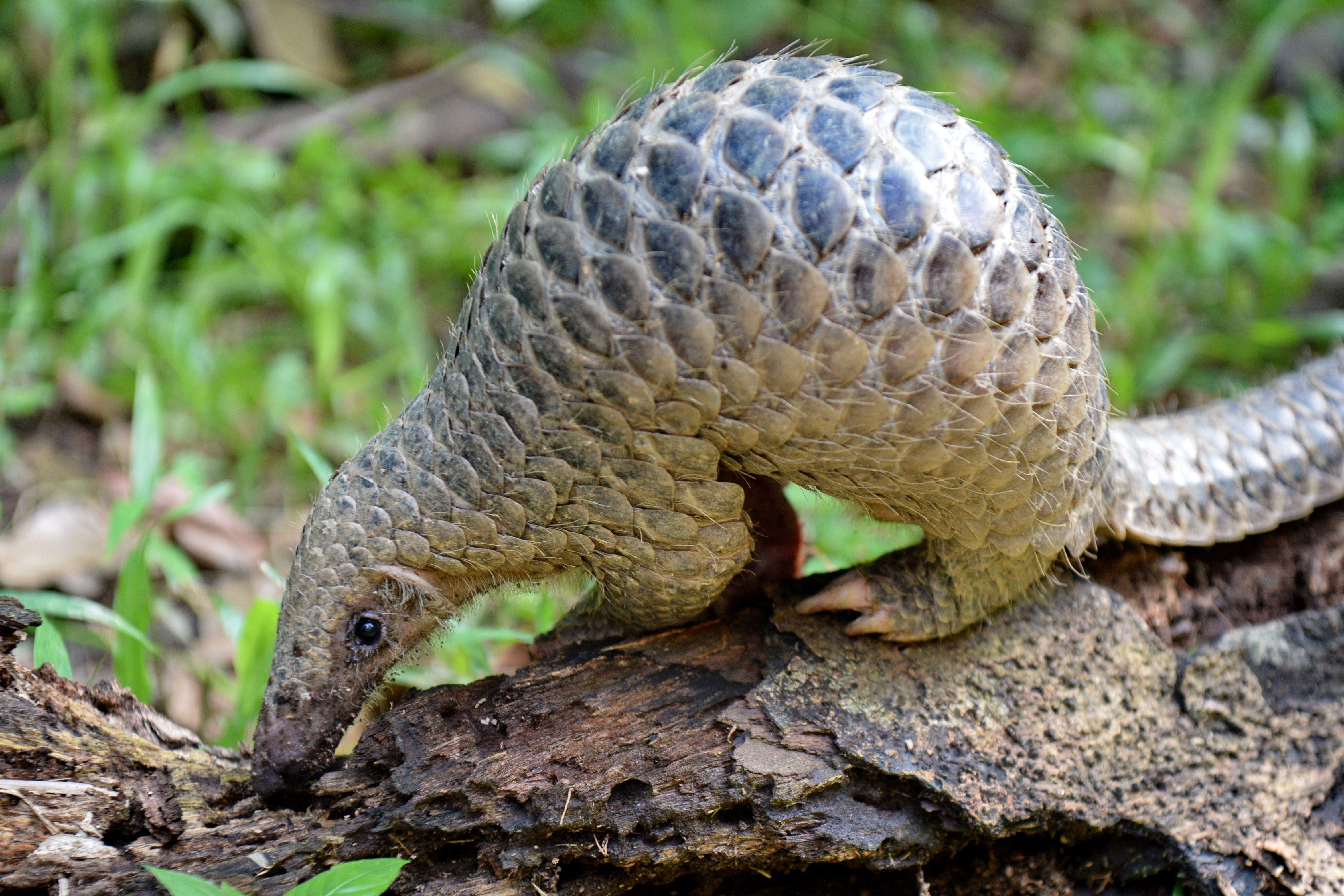The new coronavirus that’s gripping the globe likely started out in animals (probably bats) before making the jump to humans. On Feb. 7, researchers in China suggested it might (might!) have included one extra step—from bats to pangolins to humans—based on their observation that a coronavirus found in pangolins is nearly identical to the one that has the globe up in arms. Another team explains in a draft of a paper how the new coronavirus might be a mix of strains from bats and pangolins. It’s not the creature’s only recent entry into the news: In October, officials in China seized some 25 tons of illegally smuggled pangolin scales. Also, last Saturday was World Pangolin Day. Maybe at this point you have a question: Excuse me, what, exactly, is a pangolin?
A pangolin is a small mammal covered in sharp plates—a sort-of pinecone with legs and a tongue, an army tank that triggers a cuddle reflex. Some adult pangolins weigh as little as chihuahuas, some as much as golden retrievers. The Google search results for “pangolin riding on another pangolin’s back” are rich and worthwhile. Pangolins like mud! Pangolins eat termites. (Why are animals that eat termites often very cute? See also: aardwolves.) Pangolins curl up into a ball when they are scared, their soft bellies protected by an exterior of scales. Here is a lion trying—and failing—to eat a mighty curled-up pangolin.
What are some reasons to care about pangolins, aside from all of the above? Pangolins are the most trafficked mammal on the planet, according to National Geographic. Thousands of pangolins are killed every year at the machetes of poachers for their scales, which are believed (just believed) to be useful for everything from infections to cancer. Eating pangolin fetuses is believed to make men more virile. All of the species of pangolin (there are eight) are endangered or vulnerable as a result. Selling the scales, which are made of the same stuff as your fingernails, is illegal, but it took an American journalist less than an hour to track them down in a market in China armed with a scrap of paper that said “pangolin scales” in Chinese.
So, despite the creatures’ endangered status, people interact with pangolins pretty regularly, which means it’s plausible that the new coronavirus could have jumped from one of the pangolins to one of us. But note that this is early days for pangolin-new-coronavirus science—there’s not yet peer-reviewed research clearly establishing their link to the current outbreak. Conservationist Jonathan Kolby warned that “rumors” of their connection to the outbreak could fuel racist (and ridiculous) narratives related to traditional medicine. The real blame for the new coronavirus lies with humans for destroying habitats and therefore upping the contact we have with a roulette of animal germs, argued Pandemic author Sonia Shah—not with pangolins or bats or snakes or any other animal that may have spread the new coronavirus. It’s possible that the oversize rolly-pollies were involved in the deadly outbreak not at all. Either way, pangolins have a friend in Prince William, who is on camera here explaining that they might be extinct “before most people have even heard of them.” Great excuse to talk more about pangolins.
